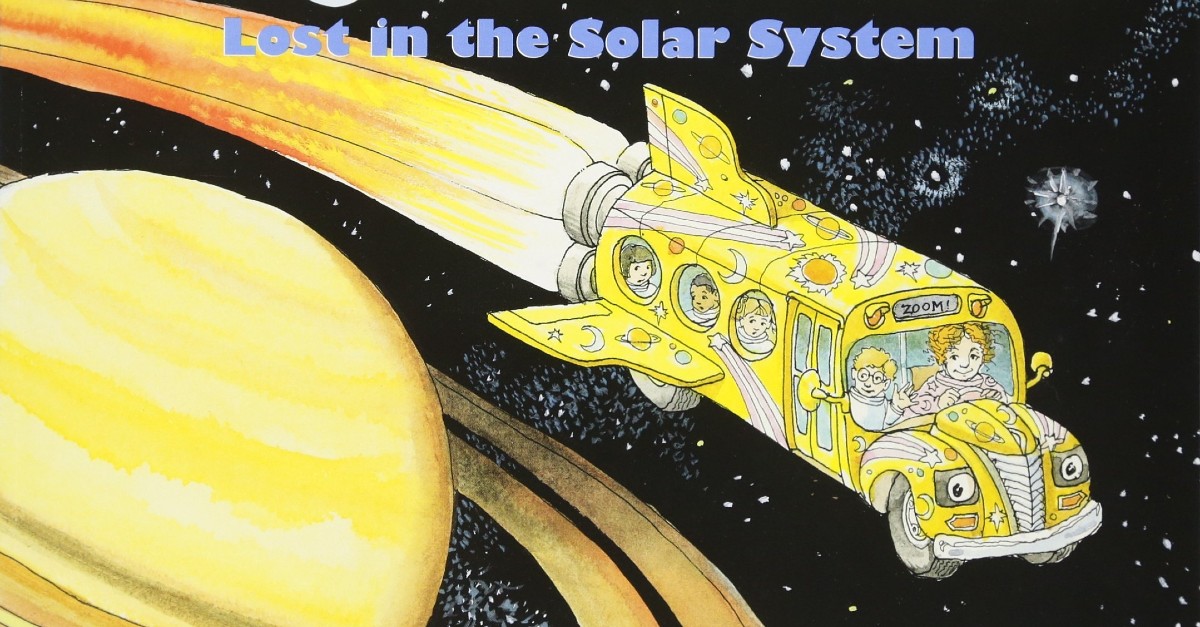By now, you have likely heard the sad news. Joanna Cole, author of The Magic School Bus books, has died at 75.
I don’t think there was a kid in my school who wasn’t positively impacted by those books. The Magic School Bus really did have a way of making education, well, magical. Instead of learning about the human body through charts and graphs, the zany Miss Frizzle would have you zipping through all four chambers of the human heart. If you enjoyed space, these books would take you on a grand tour of our solar system (ah, the days when Pluto was still a planet). My favorite was always The Magic School Bus on the Ocean Floor. I loved to imagine myself swimming with stingrays while learning how coral reefs were formed.
Like most educators, Joanna Cole knew children had an innate desire to learn. She also knew the key to reaching that desire was through wonder.
Seat Belts Everyone!
Right now, teachers are preparing for one of the most rigorous semesters of their career. None of us know what schools will look like in the fall. We’re creating plans for every contingency and stocking up on as many useful resources as possible. There is a lot of work which still needs to be done, but I believe it’s important that this sense of wonder not get lost in the shuffle. After all, student imagination may be our best tool for learning in the months ahead.
After months of quarantine and stagnation, our students will be craving wonder. We have a unique opportunity to help them grow scholastically while also improving their social-emotional health. Take advantage of this moment by incorporating activities and instructional strategies that leave your students feeling surprised, curious, and awestruck. If you’re not sure where to begin, consider using one of the ideas below.
Just A Little Imagination
Fun Facts: These bite-sized bits of information are the perfect appetizer to whet your students’ appetites for knowledge. As VAEI’s Ben Talsma likes to say, “Sharing a single fascinating fact can plant the seeds for dozens of journeys of discovery.” Furthermore, sharing fun facts can instill a mindset of curiosity in your students and a great way to engage them at the beginning of the day.
Think Weirder: Just because something has always been done one way doesn’t mean we can’t learn another. Push your students to think creatively by having them come up with a weirder way to solve a problem. Their solutions may just unearth hidden brilliance or a perspective you’ve never seen before. Plus, it’s a lot of fun.
Project-Based Learning: Hands-on projects are a great way to get students invested in their own learning. Projects like the Blue Apple units encourage students to make a positive impact on their communities by exploring modern issues and concerns. When we show students that their learning matters, they’re more likely to engage with the material and brainstorm new solutions to old problems. Challenge them with purpose and let them imagine a brave new world!
Speak Their Language: Every student is different and so are their motivations. In education, learners tend to respond to a specific Drive Language: Relatedness, Autonomy, Mastery, and Purpose. As teachers, we can use an understanding of Drive Languages to individualize the ways in which we engage our students. For example, a student who prizes mastery will wonder at the work of famous scientists or mathematics. Meanwhile, a student motivated by relatedness will respond positively when invited to participate with groups.
(To learn more about Drive Languages, check out the webinar 7 Tips for Creating Student-Driven Classrooms.)
Reflect and Wonder: Sometimes, the best way to instill a sense of wonder is to simply let students wonder. Give your students a reflection journal and let them spend a few minutes each day reflecting on their questions, wonderings, and observations. A reflection journal allows them to organize their thoughts and keep track of their goals. It also gives them a place to voice questions they might be too shy to ask. By simply giving them time with their thoughts, you can build their curiosity, creativity, and critical thinking.
Time for a Field Trip
Socrates once said, “Wonder is the beginning of wisdom.” I believe all students have a deep yearning to learn, explore, and savor the wonders of this great big world. Even during a pandemic, this drive remains undaunted. The coming year promises to be a challenging one, but so long as we remember to wonder, I believe amazing learning can still happen. So, remember to take chances, make mistakes, and get messy!

